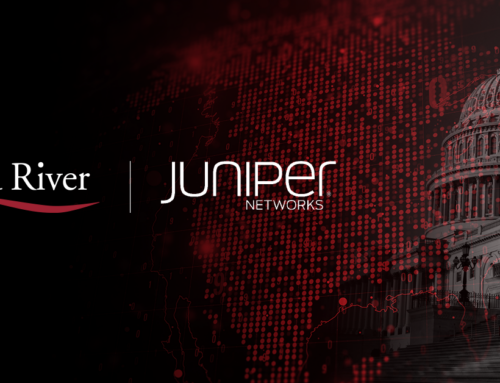
Reducing Cloud Costs with Azure Cost Management and Advisor Tools
Quick Answer: Azure Cost Management and Azure Advisor help organizations optimize cloud spending by identifying idle resources, setting budgets and acting on data-driven recommendations. Through effective cloud optimization in Microsoft environments, these tools improve visibility, reduce waste and maintain performance to ensure every resource supports business goals efficiently.
Want to learn more? Read on!
Cloud adoption has transformed how organizations work, bringing new levels of flexibility and productivity. But that same adaptability that drives progress can also make spending harder to manage. When workloads grow faster than planned or stay online after projects wrap up, costs build quietly over time. At the same time, compliance and security teams face mounting pressure to oversee a growing number of users and access points. By connecting cost management with identity governance through Microsoft Entra and a Zero Trust approach, organizations can control expenses while strengthening their overall security.
Microsoft’s native cost management tools make it possible to keep control without sacrificing agility. By combining Microsoft Entra identity governance with Azure Cost Management and Azure Advisor, organizations can reduce unnecessary spending and strengthen their security posture within a Zero Trust Microsoft framework.
The Problem: Cloud Costs Without Control
Cloud resources scale quickly, but that same flexibility can become a problem when teams lose track of what’s running and who owns it. Virtual machines may keep running long after they’re needed, or data may sit in expensive storage tiers that few people ever access. Without a single view of where the spend originates, organizations often find themselves paying for resources that no one is using. Analysts at McKinsey & Company report that organizations estimate roughly 28% of cloud spending is waste — due to things like idle resources and over-provisioning.
Poor identity governance makes the problem worse. When organizations fail to manage access controls, users and applications often keep permissions long after they’re needed. Guest or service accounts may stay active even after a project is complete, allowing those identities to access or maintain unused cloud resources. A lack of oversight leads to wasted spending on workloads no one is using and increases the risk of unauthorized access if those dormant accounts are ever compromised.
How Azure Cost Management and Azure Advisor Help
Azure Cost Management provides a clear view of how companies spend money in the cloud. The tool helps leaders understand where usage is growing and where resources may be underused. Its built-in reports reveal spending patterns and send alerts before costs spiral out of control.
Azure Advisor complements this by analyzing performance and usage patterns. It provides specific cost-saving recommendations, such as identifying idle workloads and uncovering unused or oversized resources. Advisor helps organizations act on insights surfaced by Cost Management, so the data becomes action instead of another dashboard metric.
Connecting Cost Control and Identity Management
Reducing cost is not just about turning off systems. It begins with controlling who can create or modify them. Microsoft Entra supports Azure identity management by ensuring each user and device follows least-privilege principles. Within a Zero Trust Microsoft model, businesses verify every request and continually evaluate identity.
Strong identity governance prevents unnecessary provisioning and limits accidental deployments that keep unused resources active. Over time, those controls also build accountability across teams, ensuring every cloud resource has a clear purpose and owner. The connection between identity and cost control can turn financial efficiency into part of the security strategy rather than a separate initiative.
Best Practices for Reducing Cloud Costs

Controlling cloud costs requires steady attention, not one-time fixes. Azure offers the tools to make that easier, but success depends on how consistently teams use them. These best practices help organizations create structure and maintain control and accountability over their cloud budgets:
- Establish clear cost visibility: Use Azure Cost Management to create budgets and set alerts for each business unit. You can apply resource tags that tie every expense to a specific project or owner so leaders can see exactly where money is going.
- Act on Azure Advisor recommendations: Review the Advisor cost tab regularly and start with the changes that make the biggest difference, such as removing idle workloads or shifting data into more cost-effective tiers.
- Strengthen access governance through Microsoft Entra: Consider limiting who can deploy new resources. Also, require multi-factor authentication for any high-value actions. Review permissions often to ensure access aligns with current responsibilities.
- Incorporate cost control into your Zero Trust strategy: Treat unused or orphaned assets as risks, not just inefficiencies. When every access request is verified, spending naturally stays in check.
- Maintain an ongoing review cycle: Conduct regular budget reviews and periodic identity audits to ensure policies and spending stay aligned with current business needs.
Example of a Cost-Optimization Workflow
Turning cost data into measurable savings requires structure and consistency. Azure tools make this possible by connecting cost visibility with automated controls and identity management. The workflow below shows how an organization can move from insight to action using Azure Cost Management, Azure Advisor and Microsoft Entra.
- Set budgets and alerts in Azure Cost Management: Define spending thresholds for each subscription and create alerts before usage reaches the limit. Assign ownership so every cost has a responsible team.
- Tag resources for accountability: Apply consistent naming and tagging conventions to connect each workload to a department or project. This approach ensures accurate reporting and helps identify unnecessary resources early.
- Review Azure Advisor cost recommendations: Open the cost tab each month and act on the most impactful suggestions, such as removing idle workloads or adjusting storage configurations to match demand.
- Audit identities and permissions through Microsoft Entra: Remove inactive accounts, verify guest access and confirm that only authorized users can deploy new resources or modify existing ones.
- Track progress over time: Compare spending patterns across quarters and adjust budgets or governance policies based on results. Ongoing visibility keeps cost control aligned with business priorities.
This kind of workflow connects financial management and security best practices, ensuring that cloud operations stay efficient and sustainable.
The Business Impact
Reducing waste in Azure frees budget for new initiatives while lowering your exposure to risk. Idle resources tied to unmanaged identities create unnecessary costs and open paths for attackers. When cost management and identity governance work together, organizations gain stronger protection and tighter financial control.
Red River helps customers achieve that balance by uniting Azure cost optimization with Microsoft’s Zero Trust framework. Through Azure identity management and Microsoft Entra integration, Red River helps customers reduce cloud waste while improving visibility and maintaining reliable performance.
To explore how Red River can help your organization strengthen security while reducing Azure costs, contact our Microsoft specialists for a tailored assessment of your cloud spend. We can help you optimize cloud and the tools you use to get there. Contact us.
Q&A

written by
Corrin Jones
Corrin Jones is the Director of Digital Demand Generation. With over ten years of experience, she specializes in creating content and executing campaigns to drive growth and revenue. Connect with Corrin on LinkedIn.




